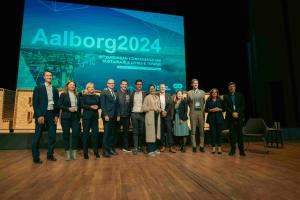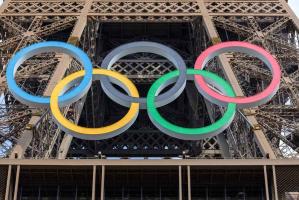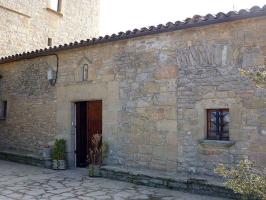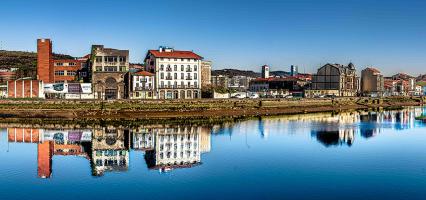Thessaloniki gets ready for its metro launch in November
The underground rapid transit lines have been under construction for almost two decades due to various project delays
 TheMayor.EU logo
TheMayor.EU logo Interview with the Mayor of Estepona
José María García Urbano is in possession of three professional titles: State Attorney, Property Registrar and Notary. Furthermore, he has a Diploma in German. Between 1985 and 1994, he held various positions in the Ministry of Justice, the last being that of Deputy Director-General for Nationality and Civil Status.
In 1995, the Ministry of Justice recognized him with the First Class Distinguished Cross of the Order of San Raimundo de Peñafort. During that time, he participated in various international missions representing the Spanish State.
He has held the position of Associate Professor of Private Law at the UNED Distance University; of Civil Law at the University of Malaga (UMA) and of Commercial Law at the Carlos III University.
He entered local politics with his election to the mayoral seat of Estepona in 2011. He was re-elected twice, in 2015 and 2019, and on both occasions, he was the most voted mayor in municipalities with more than 50 000 inhabitants.
Estepona is a magnificent city in the south of Spain, in the heart of the Costa del Sol, which in the last decade has undergone a great transformation and modernization. It is a city that has magnificent public services, countless tourist attractions and offers a great quality of life.
Estepona reacted from the first moment of the pandemic in several directions. In the first place, activating a fund of unlimited social emergency aid for the acquisition of food and for economic aid to people who are in a vulnerable situation. Second, we were pioneers in the Province of Malaga in activating a plan to boost the economy, mobilizing the largest volume of public investment in the history of Estepona through necessary and sustainable works for the city.
Currently, we have under construction: a new town hall building that will improve service and care for citizens; a 500-space car park in the heart of the city, with the payment system of 1 euro a day, managed by a non-profit organization that employs people with disabilities, contributing to the labour integration of this group; the remodelling and beautification of eleven streets of the urban nucleus; the remodelling and modernization of the promenade and new sections of the coastal path that will link the entire waterfront through pedestrian paths, among other projects.
Likewise, the City Council is also applying the pioneering measure of prioritizing the award of these public tenders to companies that allocate 0.7% of contracts to social purposes.
Finally, specific plans have been put in place to help local companies through the direct award of minor works and support plans for shops and businesses in Estepona with campaigns that have directly injected more than 300 000 euros into these local establishments.
The ‘Estepona, Garden of the Costa del Sol’ project has completely transformed the image of the city and has had a valuable socio-economic impact. Few cities have had an improvement and modernization of the magnitude that Estepona has experienced in the last decade.
This initiative was launched in 2011 to recover the city, provide it with a new tourist attraction and promote the dynamization of commerce and social life in the city. It has already allowed the renovation and beautification of more than 130 streets (18 kilometres of roads and an area of more than seven hectares), full of flowers, where the Andalusian character is enhanced, for the enjoyment of pedestrians and restricted to road traffic.
At the same time, the paving, sanitation and service infrastructures have been renewed. Likewise, thanks to it, we have managed to reposition the Estepona tourism brand and turn the city into a viable tourist attraction throughout the whole year. In this way, with the commitment to urban and cultural tourism, the hotel availability, as well as the sun and beach combine to allow travellers who have not yet experienced our city to compose a market that breaks with seasonality.
This pandemic has shown us the importance of the environment we inhabit, therefore, the urban centre of the city, with its wide pedestrianized space, has become open to walkers, providing them with a better quality of life.
The ‘Estepona, Garden of the Costa del Sol’ project has been completed with other cultural projects such as the creation of an open-air museum, featuring a Route of Artistic Murals that now has more than 60 works on the facades of buildings; the Route of Poetry with 40 literary works distributed in different corners of the remodelled urban center. Likewise, another tourist boost for the city has been the creation of the Botanical-Orchid Park, which houses one of the most unique and important collections of orchids in Europe, right in the heart of the city.
On the other hand, we have committed to a sustainable city, favouring the duplication of green areas and favouring sustainable growth combined with the re-equipment of the city. Estepona has undergone a great transformation in recent years with innumerable projects and infrastructure that have modernized the city and made it a benchmark for many other locations.
The construction of a hospital, the remodelling and pedestrianization of more than 130 streets, the creation of the Botanical-Orchid Park, the connection of the coastline through pedestrian paths, the creation of the Theater-Auditorium, the Athletics Stadium, the Fair and Sports Park or the creation of a parking plan at the cost of one euro a day has shaped a city that offers a better quality of life.
Culture is part of the quality of life in cities. In Estepona, we have a firm commitment to creators and to artistic expression in all its aspects. In this area, along with this International Poetry Prize, the International Novel Prize is worthy of mention, endowed with 25 000 euros for the winning work and a publication contract with the renowned Spanish publishing house Pre-Textos.
Bringing culture closer to citizens has been one of the lines of action of the government that I lead. In this sense, there are significant initiatives such as the aforementioned open-air museum, the Poetry Route and the Sculpture Route, with pieces that embellish the urban environment.
I would tell everyone that it is time for leadership in public institutions. The challenges are to achieve economic and social recovery from the pandemic. It is necessary for the public sector to play a strategic role that allows us to emerge stronger from this crisis. With everyone's effort, I am convinced that we will succeed and achieve a better Europe.
TheMayor.EU stands against fake news and disinformation. If you encounter such texts and materials online, contact us at info@themayor.eu

The underground rapid transit lines have been under construction for almost two decades due to various project delays

Now you can get your wine in Talence by paying directly in Bitcoin

That’s because the state has to spend money on updating the railway infrastructure rather than subsidizing the cost of the popular pass

Rethinking renewable energy sources for the urban landscape

The examples, compiled by Beyond Fossil Fuels, can inform and inspire communities and entrepreneurs that still feel trepidation at the prospect of energy transition

Now you can get your wine in Talence by paying directly in Bitcoin

The 10th European Conference on Sustainable Cities and Towns (ESCT) sets the stage for stronger cooperation between the EU, national and local level to fast track Europe's transition to climate neutrality.

At least, that’s the promise made by the mayor of Paris, Anne Hidalgo

The underground rapid transit lines have been under construction for almost two decades due to various project delays

At least, that’s the promise made by the mayor of Paris, Anne Hidalgo

Hostal de Pinós is located in the geographical centre of the autonomous region

Despite its church-y name, the district has long been known as the hangout spot for the artsy crowds

Urban dwellers across the EU are having a say in making their surroundings friendlier to people and the environment.

Forests in the EU can help green the European construction industry and bolster a continent-wide push for architectural improvements.

Apply by 10 November and do your part for the transformation of European public spaces

An interview with the Mayor of a Polish city that seeks to reinvent itself

An interview with the newly elected ICLEI President and Mayor of Malmö

A conversation with the Mayor of Lisbon about the spirit and dimensions of innovation present in the Portuguese capital














